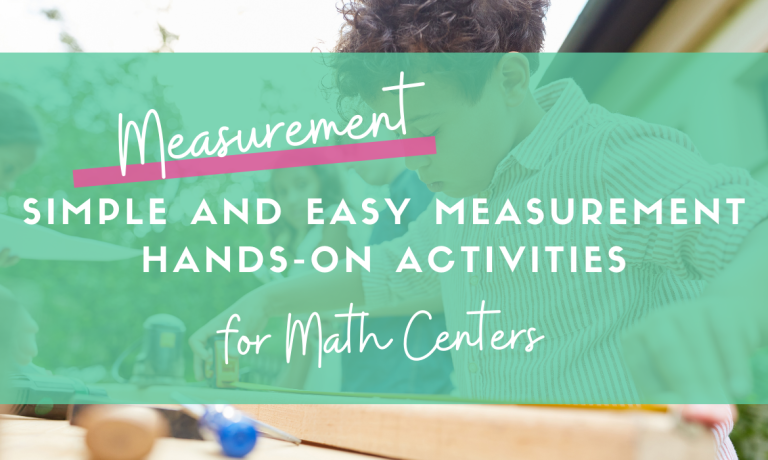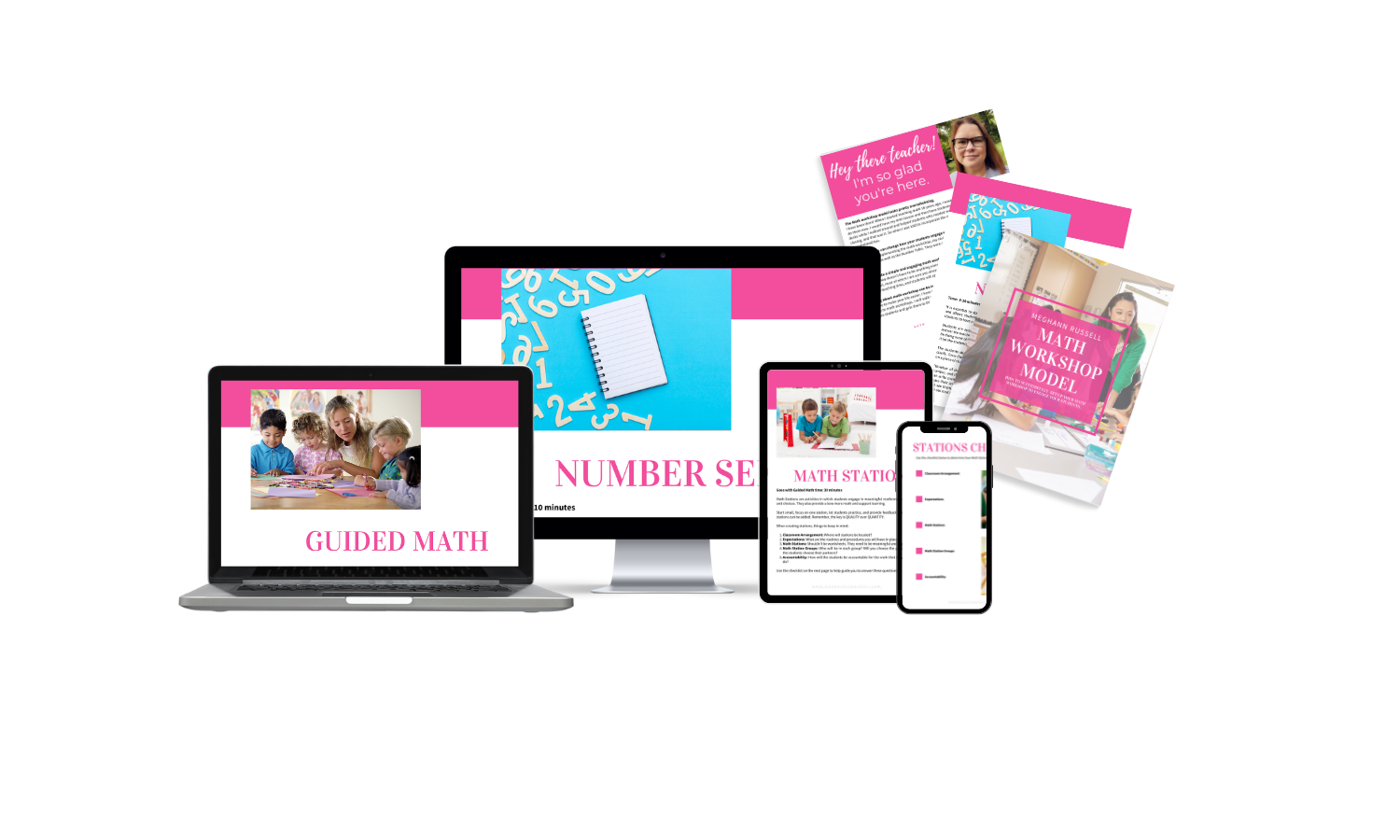We use measurement in our everyday lives. Think about the simple task of making your dinner for the evening. You use weight and capacity to determine how many ingredients to put into the meal you are preparing. It is an essential skill that we use every day, and it is an integral unit that we need to teach our students. Measurement is also one of the most fun and engaging units in math. There are so many different hands-on activities that you can use with your measurement math stations that students can use to measure objects in the classroom.
In this blog post, I will share with you four ways you can incorporate measurement in your math stations that your students will love.
Why Activities for Measurement are Important?
Measuring is a math skill that students will use a lot in their lives. Teaching measurement skills allows students to grasp the basics to build upon those skills later. They will use these skills for everyday cooking, organizing objects, understanding time and money! Teaching them measurement also increases their critical thinking and problem-solving skills.
Measurement Hands-On Activities
Students need to have hands-on experience with measurement and not just look at a worksheet and circle which is longer, heavier, etc. They need practical experience to genuinely grasp size in a way that will help them succeed well after they have left your classroom. Below are four ways you can engage your students in fun and easy measurement.

Comparing Measurement Math Stations
There are many ways you can use measurement to compare objects. To do any of the following activities, grab a bucket with things such as crayons, markers, glue sticks, markers, etc., and have them ready to go.
The first activity is to find two objects in a bin where one is longer than the other. For example, the pencil is longer than the crayon. Then have students find two things in a container where one is shorter than the other. For example, the paper clip is shorter than the glue stick. Finally, have students find two objects in a bin of the same length. For example, the pencil is the same length as the marker.
Another hands-on activity would be to take one object, for example, a book, and have students measure the length using different things, such as paper clips, cubes, inch tiles. After the students have measured the book using various forms of non-standard units, have them compare the numbers and ask why the numbers are different. This is a great way to get students to think critically about how measurement works. It is a precursor to when they have to measure using standard measurement where there are various ways to measure, such as inches and centimeters, or miles and kilometers.

The last activity you can use to compare measurements is to have a stack of cubes (in either a tower of 5 or 10) and have students go around the classroom and find objects taller than, shorter than, and equal to that tower. This is a fun game for your students to use as a whole group lesson and a math station.
Using a Scale for Measurement Math Stations
The scale can be used in the same way to compare the weights of objects as I described in using length.
To start, have a bin filled with objects around the room, such as a book, pencil, scissors, etc., and make sure you have a scale for the students to use.
The first activity is to find two objects in a bin where one is heavier than the other. For example, the book is heavier than the scissors. Then have students find two things in a container where one is lighter than the other. For example, the pencil is lighter than the shoe. Finally, have students find two objects in a bin with the same weight. For example, the crayon is the same weight as the cube.

Another activity that you can use is to take one object, such as a marker, and then have students measure weight using different objects, such as paper clips, cubes, coins. After the students have measured the book using various forms of non-standard units, have them compare the numbers and ask why the numbers are different.
These are just a few examples that you can use for measuring weight.
Using Containers for Measurement Math Stations
Teaching capacity is also an essential skill for students to learn in class. You need some small boxes, cups, bowls, bottles, etc. You also need substances to fill the containers, such as beans, sand, water, rice, etc.
The first activity is all about understanding capacity. Start by showing students two containers and asking which holds more liquid. Then have students explain their answers. Then have the students use any substance they choose to prove their theory. Have them discuss their findings with each other as you record them for the class to review later.
Another activity you can use with your students is giving them two objects, such as a plastic cup and a coffee mug (but not your favorite one!), and have them fill both with marbles, cubes, etc. Once they are done filling the containers, have them take out the marbles or cubes from each container and compare the numbers. Then have them use the sentence frame “My plastic cup holds ___ more marbles than my coffee cup.” This is a great way to see capacity and how much an object can hold visually to see capacity and how much an object can hold visually.
Sorting Using Measurement Math Stations
The final section of measurement activities you can use in your math stations is sorting objects. This is a great activity to use as a review for the end of the unit.
With this quick activity, you can have students sort objects using a form of measurement. For example, hold up a book and say sort the things in the bin that are lighter and heavier than this book. Or hold up a pencil and have students sort objects by objects that are longer and shorter than this pencil. This is a great quick review for your students at the end of the unit and a quick way for you to check who understood the measurement tasks from the entire team.

Hands-On Measurement Activities are Important
We use measurement in our everyday lives. Again, think about the simple task of making your dinner for the evening. You use weight and capacity to determine how many ingredients to put into the meal you are preparing. It is an essential skill that we use every day, and it is an integral unit that we need to teach our students. Students need to have hands-on experience with measurement and not just look at a worksheet and circle which is longer, heavier, etc. They need practical experience to genuinely grasp measurement in a way that will help them succeed well after they have left your classroom. You can have students compare objects using length, weight, and capacity. You can even check on your student’s understanding of measurement by having them sort things based on one form of measurement. There are so many activities that you can use to keep students thinking critically and engaging in meaningful learning.
Comment below with your favorite activity that you use in your classroom!
Related Articles
Make your Measurement Number Talks Quick and Easy with These Steps
Getting your Math Centers off the Ground
Measuring! Mini Math Movies Scratch Garden



